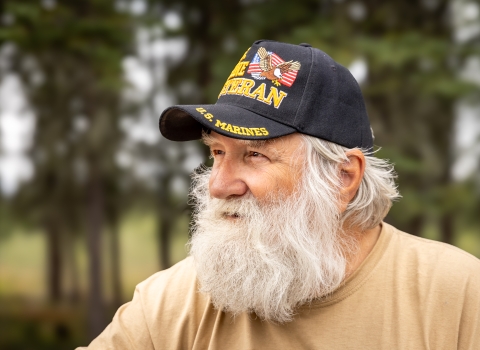Bird enthusiasts with an avian interest flocked together for International Migratory Bird Day 2015 to participate in the study of raptors inhabiting the Morley Nelson Snake River Birds of Prey National Conservation Area (NCA) in southwest Idaho.
True to its name, the NCA delivered an abundance of birds of prey to the participants who came from as far as Spokane, Wash., to learn about raptors and their management. The daylong event was a birder’s raptor rapture. Observed raptors included golden eagles, red-tailed hawks, Swainson’s hawks, ferruginous hawks, American kestrels, northern harriers, and several owl species, among other migratory birds.
Participants were more than observers. For one day nine people experienced what it was like to be a biologist working on the conservation of the NCA’s raptors. Each participant observed a golden eagle nest, handled screech owl chicks, and assisted with the measurements of the birds being studied. The event was offered by the Bureau of Land Management (BLM) and supported by the US Fish and Wildlife Service (FWS).
Patrice Davies, a master naturalist who participated, enjoyed the hands-on experience the event offered her and other participants.
“I thought it was a great day. I really enjoyed how engaged they allowed the participants to be. We got to hold the birds, weigh the birds, record their weights, and be involved in the whole research process,” she said “We saw an abundance of raptors: we saw barn owls, we saw great horned owls and then the screech owls, which was the purpose of the research study. – just a great opportunity to see what US Fish and Wildlife Service and the BLM is doing.”
Individuals, a married couple and a family took advantage of the unique opportunity to get a peek behind the conservation curtains. However, the event is suitable for children attending upper elementary since the entirely outdoor learning opportunity is an introduction to basic science and wildlife biology, Davies explained.
“I would particularly recommend it to families. I think it would be great, particularly for older kids to be able to do it,” she said. “Seeing baby birds is always fun for kids.”
Predictably, participants were smitten by the chance to assist with the monitoring of 12 screech owl nestlings. Oohs and ahs welcomed the screech owl chicks when Joe Weldon, a NCA biologist, and Matt Stuber, a FWS biologist, removed them from their nest boxes.
Participants gently held the nestlings while Weldon and Stuber affixed an aluminum numbered band to a leg on each bird, giving each a unique identifying number. The band numbers, along with information about the bird such as nest location, weight, and general health, were entered into the database of the North American Bird Banding Program’s Bird Banding Laboratory.
Banding projects, such as this one, help biologist across North America research and manager bird species. Individual identification of birds makes it possible to study various facets of avian biology- including migration, behavior, social- structure structure
Something temporarily or permanently constructed, built, or placed; and constructed of natural or manufactured parts including, but not limited to, a building, shed, cabin, porch, bridge, walkway, stair steps, sign, landing, platform, dock, rack, fence, telecommunication device, antennae, fish cleaning table, satellite dish/mount, or well head.
Learn more about structure , life-span, survival rates, reproduction success, and population trends. This information ultimately allows for better management of migratory birds.
Once banded, participants like Davies recorded the size and weight of the screech owl nestlings under the supervision of the experienced biologists. Finally, each chick was checked for pests by gently blowing over the hand-sized raptors. Every bird was safely returned to the bird boxes.
Throughout the day participants were free to ask questions of the biologists, who talked about their day-to-day work in an accessible manner. That casual discussion with people who otherwise wouldn’t be exposed to the biologists’ conservation work was by design.
“It’s great to get some basic science across, some information that we as biologists take for granted. It’s great to have an exchange of information with the public,” said
Weldon, who works out of the BLM’s Four Rivers Field Office. “Morley Nelson Snake River Birds of Prey National Conservation Area was set aside specifically to manage for birds of prey; raptors: hawks, owls, eagles. So it’s really important to have the public out on the land and seeing these resources that are being managed for them.”
The annual offerings of the event are free to the public.
“We do these activities each year and they’re open to whoever wants to come,” said Weldon, an Oregon State University graduate.


